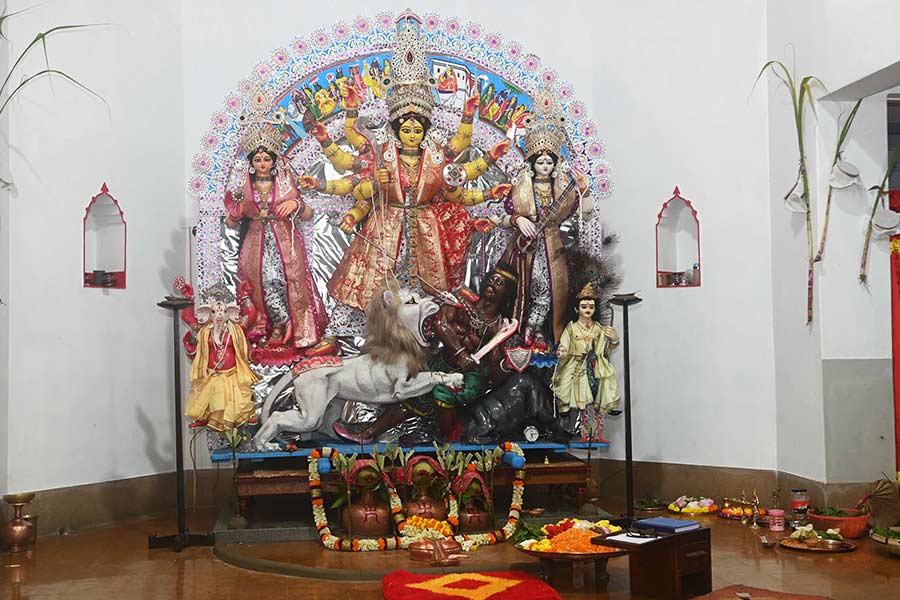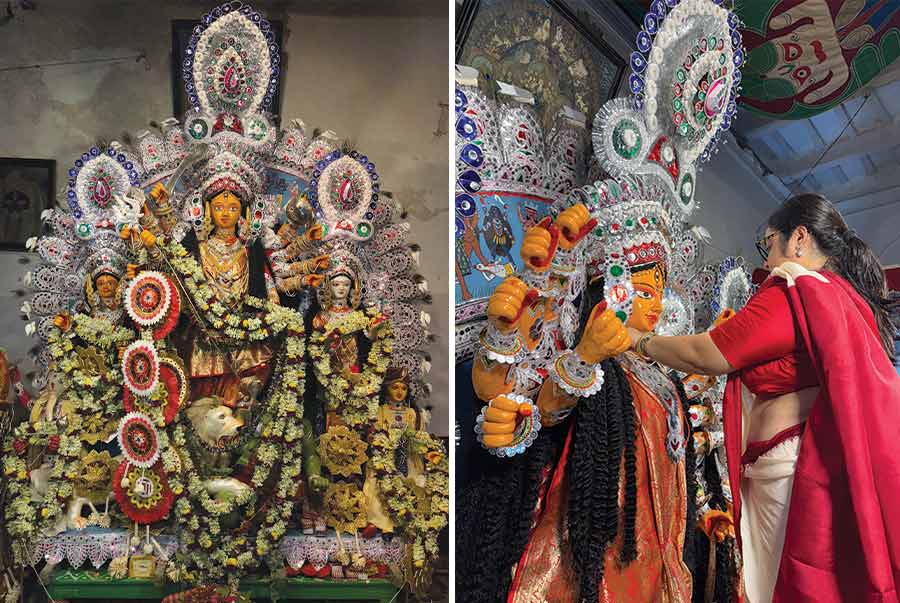“Every golden ornament you see on the idol is gold and every silver ornament or weapon is silver,” said Swapan Kumar Lahiri, waiting for the Panchami puja to begin. Known as Bhebul da, Swapan Lahiri is the seventh-generation descendant of Krishnachandra Lahiri who started the Durga puja of Lahiri Bari in 1824 at Tantibanda village in Pabna district.
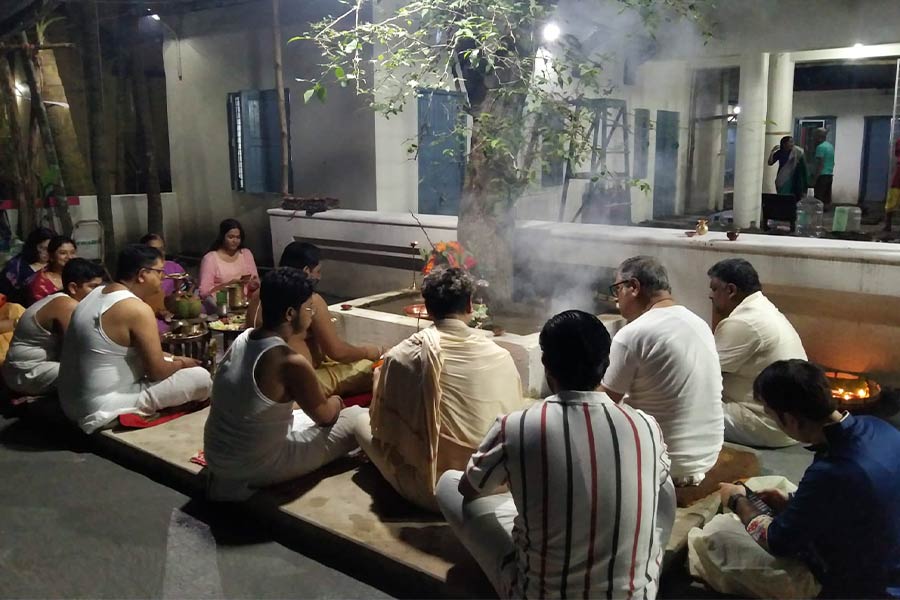
‘Bodhon’ puja on Panchami evening
After the Partition of Bengal, the family moved to Hindustan Road in 1950, where the puja continued for nine years before it was brought to Rajpur’s Lahiri House near Dakshin Jagaddal in South 24-Parganas. Soon it gained popularity in the area and to this day the Lahiri Bari Durga puja is a magnificent affair with family, extended family, friends and acquaintances visiting from different parts of the world. This year, as the puja completed 200 years, the Lahiri family invited My Kolkata to join and explore its age-old traditions.
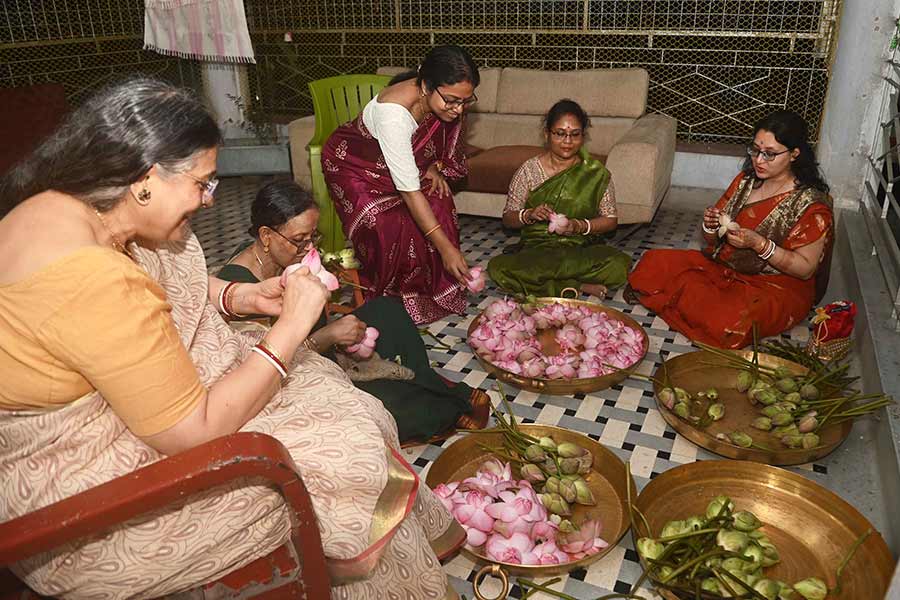
All arrangements of the Puja are done by the family members
Lahiri family still holds up 200-year-old traditions
The neighbours of Lahiri Bari describe the puja as the Durga puja ‘where the idol is wrapped in pure gold and silver jewellery’. The ritual of adorning the Durga in gold and silver ornaments takes place on Panchami morning. “Our Durga idol and her children wear our traditional jewellery. Years ago, when we used to take the idol for immersion, the local police station provided us with security personnel because we came back with trunks of jewellery after the immersion. Now, we carry out the immersion in our house pond, which is solely used for this purpose,” said Swapan Kumar Lahiri.
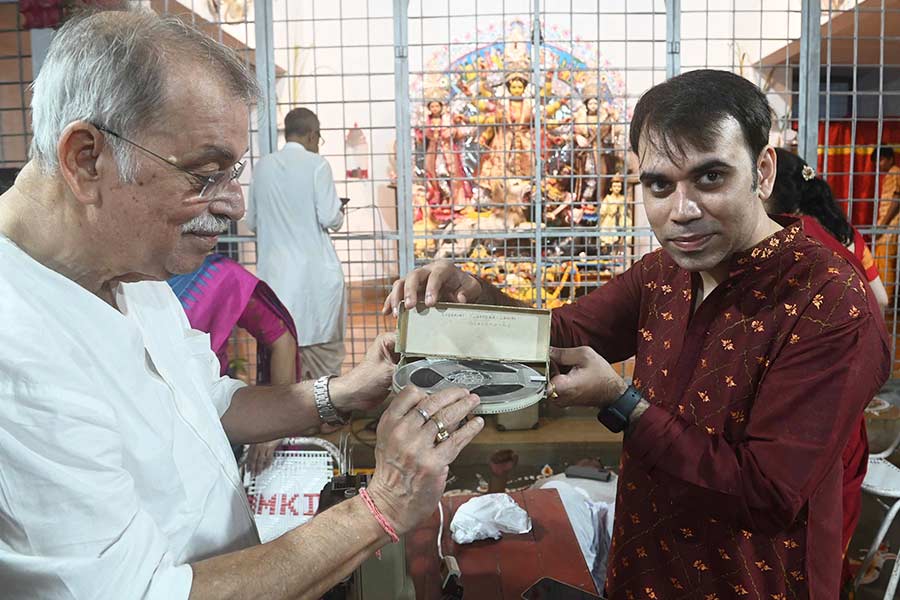
Swapan Kumar Lahiri (left) and son Shambodeb (right) set up the reel on the projector for the screening
The pratima (idol) of this Durga puja is given shape in the mandap itself on the 200-year-old iron and wood kathamo (structure). The family has its mould for the Durga’s face which ensures that the facial look does not change. Eighth-generation descendant Shambodeb Lahiri explains: “The face of our Durga has been modelled after Prasannabadanang Devi since the very beginning. Therefore, we have our own mould for the face so that it does not change. The idol has certain measurements and we keep monitoring it as it takes shape. Otherwise, the silver weapons won’t fit.”
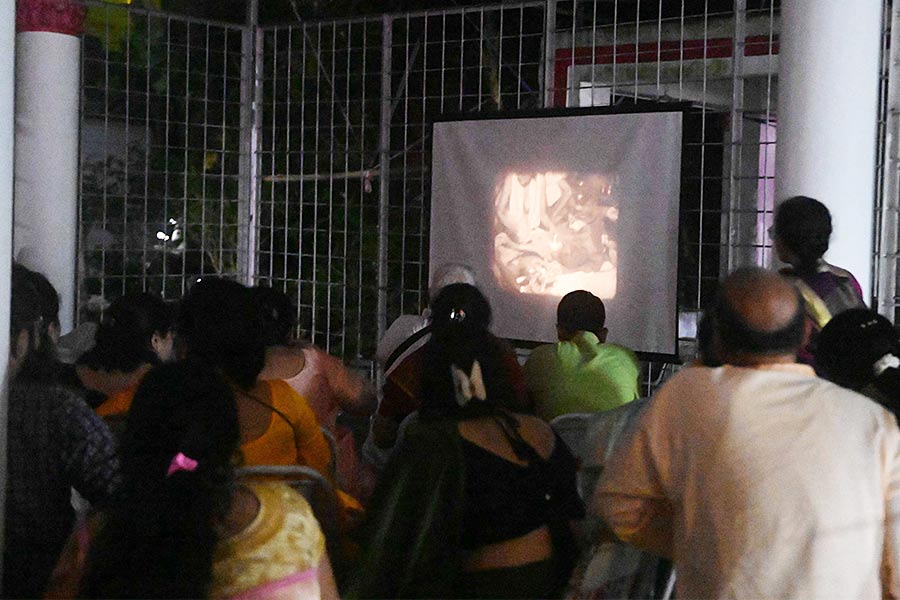
A special screening was held this time were a recording of the Durga Puja in 1955 by Suprabhat Chandra Lahiri was projected
Although the families have become small, traditions and rituals remain unchanged for this family. Bhog is distributed twice every day to more than 500 people on the six days of Durga Puja. The bhog offered to the goddess is aamish (non-vegetarian); with two types of fish being a must. The bhog is made by the women of the house and served to the guests. “We have a fixed menu on each day for lunch and dinner. The women of the family fast and cook the bhog. We never had rannar thakur to do this. It is a tradition that we follow strictly. This year, my daughter-in-law has entered the kitchen for the first time to prepare the bhog,” said Swapan Lahiri. On Dashami, the family members consume naal panta to bid the goddess farewell. The Puja rituals are performed by the priest in the presence of a tantrodhor, who ensures that every mantra is pronounced correctly. Right before the Sandhi Puja, a gunshot is fired from a double-barrel rifle and during the immersion, too, gun-firing is a ritual. The rifle is now shot by Swapan.
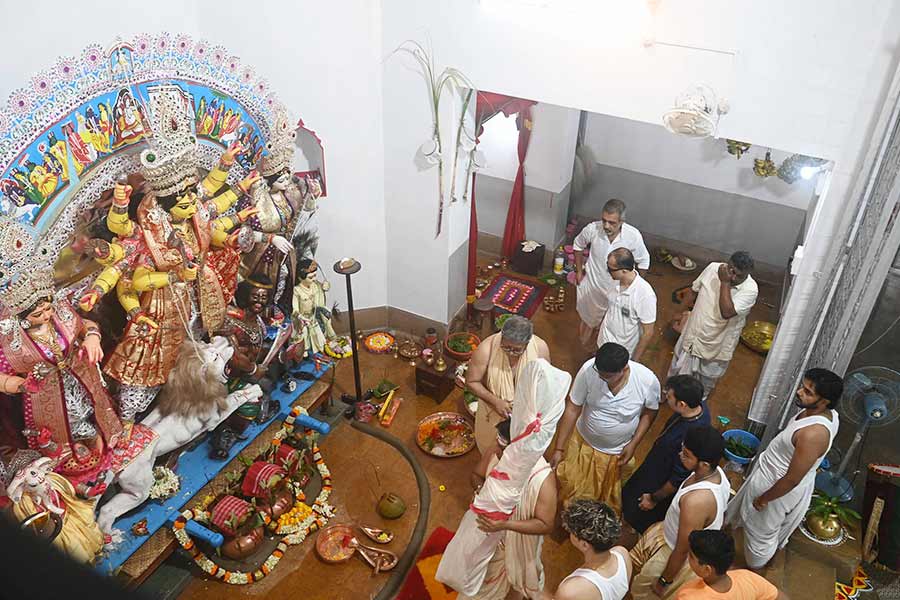
Top view of the Durga ‘mandap’
Bicentennial celebrations
To celebrate the bi-centenary, the family this year invited all vendors for bhog. From flower suppliers to fish sellers, they were all a part of the pujo as the family wanted to perform the nar-narayan seba. Additionally, Swapan Lahiri arranged for a special film screening on Saptami, where a 70-year-old recording of the pujo was projected. It was shot by Swapan’s father, late Suprabhat Chandra Lahiri, in 1955. Swapan Lahiri, who is a retired engineer, worked for months to retrieve his father’s film and got the projector fixed.
The legacy called Durgotsav
The puja is performed in the Shakto way in this family. The young men of the family are given all the responsibilities of the arrangements, while the elders guide them through. The family calls it Durgostav instead of Durga Puja. “My chhordadu (granduncle), late Sunil Kumar Lahiri, was the main guide for the puja. He was the one who built this house in Rajpur with the mandap and separate kitchen for bhog. On why we call it Durgotsav and not Durga Puja, he attributed it to be a time when all family members got together to celebrate, basically a festival of togetherness,” Swapan said.
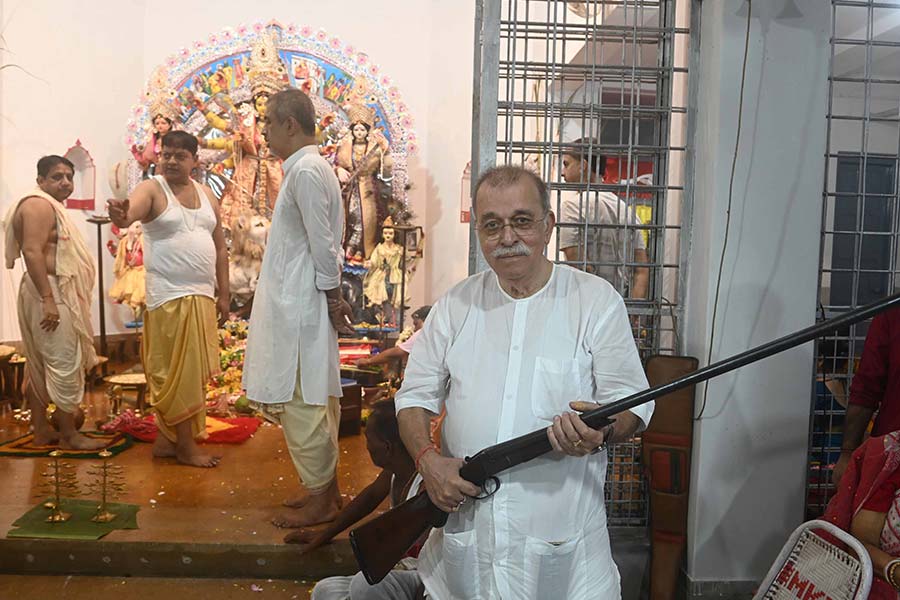
Swapan Kumar Lahiri poses with his double-barrel rifle before Sandhi Puja
Shambodeb Lahiri, son of Swapan Kumar Lahiri, works in Mumbai but like other members of the family he makes sure to join the festivities at home. For him, the responsibilities are varied but he enjoys every bit of it. “In our house, the responsibilities are shared and everyone has to work together. While I can mop the mandap, I might also carry the bhog. On the other hand, I may also be engaged in the pran prathistha (awakening the goddess) ritual. It is about togetherness. The family has become smaller but the Durga Puja continues as it did,” summed up Shambodeb.
